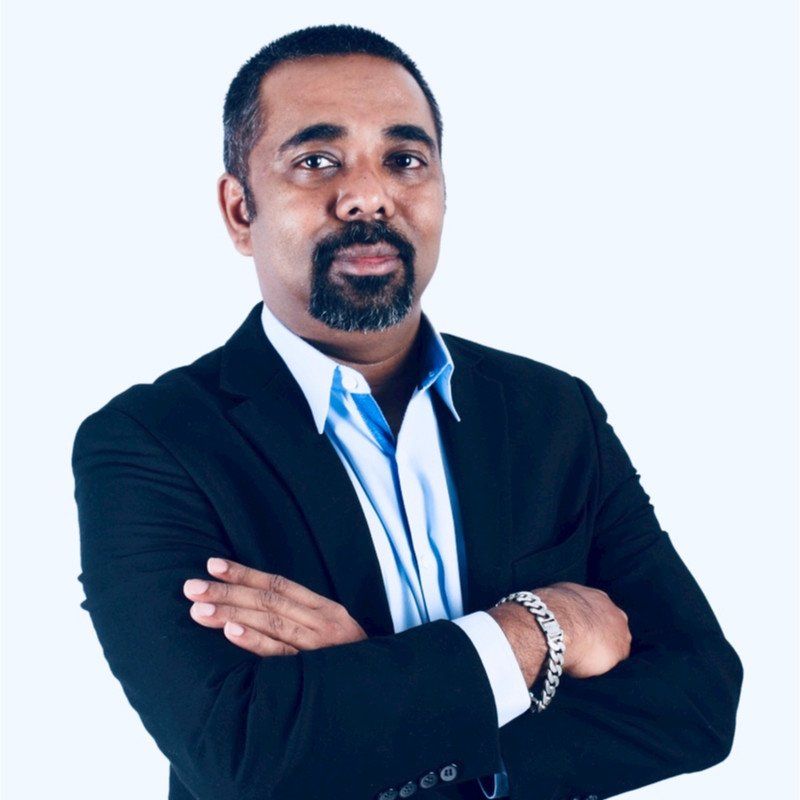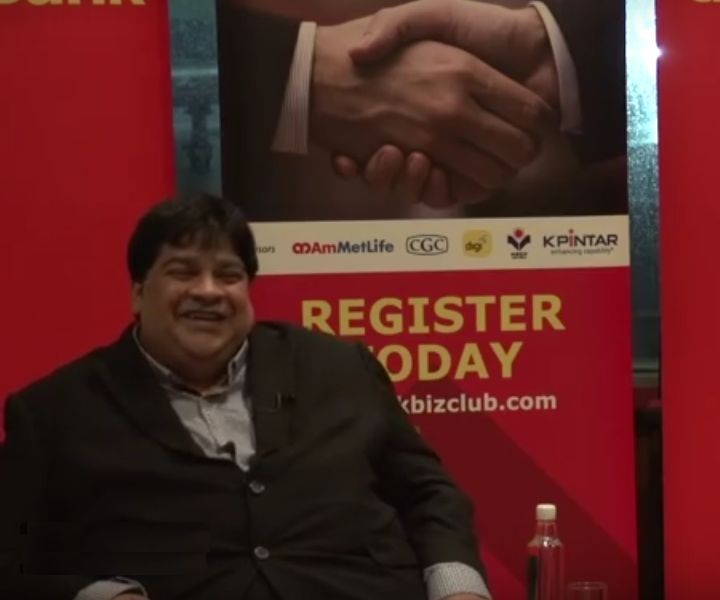Management Systems: Leadership and Effectiveness (Part 1)

The Science of Peter F. Drucker
In the previous installment of this series, management was defined as per Peter Drucker’s words: as tasks to make people capable of joint performance, to make their strengths effective and their weaknesses irrelevant. Management is therefore about the organisation of people and human capital.
For an organisation to be successful, a great deal of reliance is placed on its management systems and executives. It is the effectiveness of their leadership that enables an organisation to contribute to its customers and society at large.
The success factors and areas of focus are its organisational structure and its focus on performance. Both reflect on the satisfaction of its customers. This article will focus on the effective executive establishing interactions between the organisation as a structure and achieving the satisfaction of its customers.
The Theory of Business
Effective executives are managers that lead and deliver the performance that is expected by their customers. Good management systems are needed for them to achieve this. The diagram above shows the internal aspects of organisational management systems.
The primary focus of a manager is to formulate the theory of business, develop competency in management practices, acquire and learn management and leadership skills and finally execute all the tasks that a manager is expected to do.
The theory of business begins with a clear and precise focal point – the customer. A customer is what defines the business. Their satisfaction and the value created for them is what makes a business perform. 
The executive and management are therefore responsible for the theory of business. Until and unless a common theory is established, the organisation will not be able to function as an effective and efficient unit. There will be conflicts and confusion arising from multiple theories and strategies. An effective executive will always begin by formulating or reviewing the theory of business and its relevance to existing and potential customers.
The evaluation and formulation of this theory begins by fundamentally answering these five questions:
- What is our mission? – A business must reflect on the opportunity, resources and processes that will drive focus on business model innovation.
- Who is our customer? – The primary stakeholder whose problem or opportunity that your business addresses.
- What does the customer value? – What is the value proposition and the value creation for the customer (and in turn for the business).
- What are our results? – Identifying the key metrics and measures to assess the progress towards achieving the mission.
- What is our plan? – Starting with the mission and following through with the execution and action steps.
The goal of an organisation is to create value for its customers. The examination of the theory of business requires an executive to fundamentally look at organisational impact on both the customers and stakeholders.
A successful organisation requires both internal and external aspects to function cohesively and not independently of one another. The internal and external aspects of an organisation is what creates an operating environment and an effective executive has to be aware of the current environment and how it can affect the future. No executive can magically predict the future, but it’s the theory of business that the executive articulates based on the trends of present and emerging business and social environments.
The resulting unification of the organisation will enable it to journey towards success in the future. The review of the theory of business is something that has to be done ideally every year. An assessment of the customers and what they value, the results and the plans needed to be done and where necessary, revised.
A successful organisation and executive makes these revisions based on what activities, processes or services need to be abandoned, changed or innovated. Thus, effective management systems are born.
Management systems: tasks
Once the theory of business has been established and agreed upon, the executive is left with the decision to execute the tasks. The success or failure of the organisation will rely solely on the effectiveness of the execution. 
Ken Allen, a successful leader from DHL Express wrote in his book entitled Radical Simplicity that execution is not just about doing the right things or right the first time, but getting it done better, faster and more productively. The focus of execution should not be about the competitors but the customers.
Furthermore, the successful approach to execution is for the executive to surround him or herself with the right talent to achieve the plans derived from answering questions that established the theory of business.
The main tasks an executive need to effectively execute are:
1. Delivering financial objectives
A business organisation, whether a profit or non-profit outfit, needs to deliver its financial expectations. The objectives may be to maximise profits and EBITDA for the former whereas for the latter it could be to minimise costs and expenditures. Either way, its existence is defined by its financial performance and when these objectives are not achieved, the executives are considered to have failed in their task.
Therefore, every decision that is made needs to consider the impact to the financial performances and the poor communication of tasks related to these objectives can affect the effective execution of these tasks.
2. Developing talents and workforce
An organisation needs to be structured to function in the most flexible and efficient way where talents and workforce are able to perform and grow in their respective areas of competence. To execute this task, the executive needs to have the ability to analyse activities, inputs and output performances and the interactions between varying functions.
The goal is to develop an organisation that performs as a team where working in silos is eliminated. Additionally, the executive needs to be able to lead, coach and mentor the team and allow decisions and actions to take place where the information is. A performing organisation is an organisation that is led by an executive that develops the skills and competencies of the talents and the workforce.
3. Delivering business performance
The business performance here is specific to delivering the expectations of the customers by measuring and monitoring the inputs and outputs of activities that result in the output delivered to customers. An organisation’s inability to deliver business performance will result in its inability to meet the financial objectives. The executive needs to understand the results that a customer expects and establish the appropriate metrics and controls to ensure performance is delivered.
Management systems: practices
Leaders are individuals who are effective in these 8 key practices:
- Asking what needs to be done
- Asking what is right for the enterprise
- Asking and developing a plan of execution
- Taking responsibility for decisions
- Taking responsibility for communications
- Focusing on opportunities in instead of problems
- Runs productive and effective meetings
- Think of the team first.
The success of an effective executive not only depends on formulating the theory of business but also their ability to integrate practice, skills and tasks in order to achieve the organisational goals. The executive who leads an organisation may have varying personalities, values, education, strengths and weakness, however their effectiveness can be summarised based on the eight key practices shown above.
The key practices of an effective executive were derived from their ability to:
1. Understand the effort and resources needed to achieve an output that meets the customer’s needs
By applying the empirical rule of Pareto, 80% of the output comes from focusing effort and resources on 20% of the activities that meet the customer’s needs. Efforts and resources that do not add or create value need to be eliminated.
2. Establish priorities for the organisation based on the theory of business
By asking what needs to be done, what’s the right thing to do and how it can be done right (especially, getting it right the first time). Opportunities to the employees and to the management team has to be based on results and areas of performance where they are achieved.
3. Make decisions supported by data, facts, knowledge and information
An executive has to make decisions not just based on problems but also based on opportunities for the organisation and then assigning the best resources that can be selected and developing the best possible plan that can be executed.
Additionally, the executive needs to be open and allow for decisions to be challenged and discussed (as decisions are made at every level of the organisation, beginning with individual professional contributors and frontline supervisors) thus enabling opportunities for rational decisions and not just unilateral decisions.
4. Take responsibility for decisions made and be responsible to communicate decisions effectively
The resource plan and action plan on activities, processes or services that need to be abandoned, changed or innovated have to be communicated and thoroughly understood by the organisation. In today’s business environment, information is the factor that keeps an organisation together, unlike in the past where command and control was the main factor.
Management systems: skills
The next area for an executive to consider are the skills that are required to be effective. It is uncommon to see an organisation establishing a list of divergent skills for its top executives, varying from the ability to understand world economics and market dynamics to financial management, people management and product or service management and even more so today technology management. However, in the science of management, and management systems in particular, the fundamental skills that need to be developed over a period of time are:
- Problem-solving skills – developing the ability to identify a problem, defining the problem, using data to support decisions on root causes and action plans for improvements.
- Analytical skills – developing the ability to analyse and interpret data using tools and techniques that enables data-driven decision making.
- Financial skills – developing the skills to perform budgeting, undertake cost controls and developing skills to understand and act on financial statements (profit and loss statements, balance sheets, cash flow statements etc.).
- Measurement skills – developing the skills to establish not just measurement systems but the right performance measures and performance indicators that are based on qualitative and quantitative assessments. The measurements need to reflect what a customer values and where performance needs to be improved.
In addition to the above, an effective manager also needs to have the skills to make decisions and to communicate them. Decisions may have to be based on risk, economic impact, or even in recent times, a pandemic.
These may result in abandoning products and services that no longer add value, or having to change the resource profile in order to improve services and gain more efficiencies as well as the acquisition of new technology or innovating solutions that may provide a leap in the market segment.
An executive often has to execute and communicate a decision that may yield either a positive or a negative outcome and to do so requires courage. These are both skills and practices that can be learnt and applied.
Conclusion
By understanding how the theory of business interacts with the tasks, practices and skills, an executive can effectively organise its business to focus on delivering value to its customers. However, these are the internal aspects of an organisation. Effective management systems are only achieved when the theory of business is used as the foundation to execute tasks that deliver objectives, enabled by the skills and practices that the executive acquires and applies as a leader in the organisation.
Business
Tags: Executing Leadership, Research & Development, Alignment & Clarity, Systems & Structures
Arul is currently an independent consultant working on improving the component level supply chain for a popular electric vehicle brand and also enabling the disruption of delivery services with cloud based technology solutions. He formerly was with GEODIS as the regional director of transformation and as the MD of GEODIS Malaysia. In GEODIS, he executed regional transformation initiatives with the Asia Pacific team to leapfrog disruption in the supply chain industry by creating customer value proposition, reliable services and providing accurate information to customers. He has driven transformation initiatives for government services and also assisted various Malaysian and Multi-National Organisations using the Lean Six Sigma methodology.







